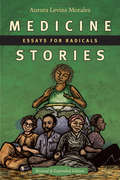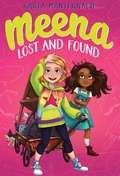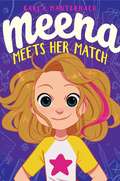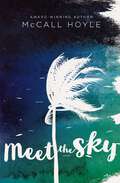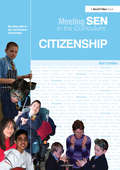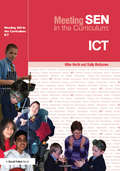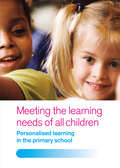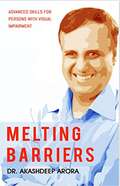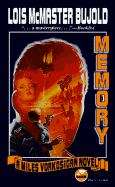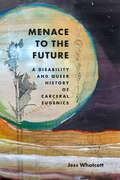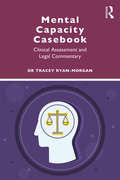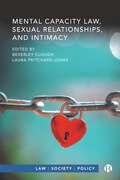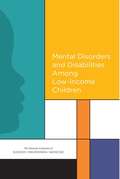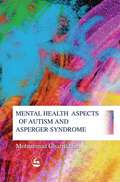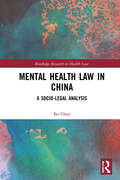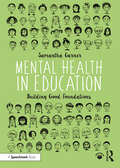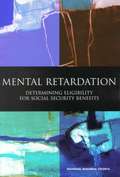- Table View
- List View
Medical Psychosocial And Vocational Aspects Of Disability
by Elliott FitzpatrickThe text contains 33 chapters on selected topics in medicine and rehabilitation. The chapters fall within the following major categories: Rehabilitation Medicine, Common Medical Conditions, Sensory Organ Conditions, Brain and Spinal Cord Conditions, Neuromuscular and Joint Conditions, Psychosocial Conditions, Developmental Conditions, Assistive Technology and Reconstructive Repair, and Genetics. The text also contains an Appendix of Medical Terminology and a detailed Index. The text provides a discussion at the end of each chapter, along with a brief case summary to illustrate how the information is relevant to the person/client. The intent of the authors is to present medical and psychosocial information and make the information relevant to the rehabilitation process for person with disabilities. Although the text is used in a variety of settings, the resource was initially developed and revised every five years specifically for the student in the rehabilitation counseling training programs at major universities around the country. The lead author, Dr. Marty Brodwin, was a long time rehabilitation educator (recently retired) at California State University at Los Angeles.
Medical and Psychosocial Aspects of Chronic Illness and Disability (4th Edition)
by Donna R. FalvoMedical and Psychosocial Aspects of Chronic Illness and Diseases, Fourth Edition covers the medical aspects of those conditions commonly encountered by rehabilitation and other health professionals and discusses symptoms, diagnoses, treatments, and prognoses. This Fourth Edition has been completely revised and updated and reflects an approach consistent with the philosophical underpinnings of the International Classification of Functioning, Disability and Health (ICF). New chapters on Conceptualizing Chronic Illness and Disability; Intellectual Disability; and Financing Rehabilitation have been added. In addition, chapters on Psychiatric Disability, Substance Use, and Conditions of the Blood and Immune System have been expanded
Medical, Psychosocial And Vocational Aspects Of Disability
by Martin Brodwin John Howard Frances Siu Erin Brodwin Ashley DuMedical, Psychosocial and Vocational Aspects of Disability (4th Ed. )
Medical, Psychosocial and Vocational Aspects of Disability (3rd edition)
by Martin Brodwin Frances W. Siu John Howard Erin R. BrodwinThe text is widely used at the master's level for students in the broad field of rehabilitation counseling and allied health services. The text has become a standard in the field of rehabilitation counseling and is a useful reference for professionals involved in day-to-day case work.
Medical, Psychosocial and Vocational Aspects of Disability (Second Edition)
by Martin G. Brodwin Fernando A. Tellez Sandra K. BrodwinThis book is a textbook for students and a reference book for practicing counselors and other helping professionals. The intended audience includes rehabilitation counselors in both public and private sectors, rehabilitation educators and their students (undergraduate and graduate programs), vocational experts, work evaluators, counselors in a variety of settings, and other helping professionals.
Medical, Psychosocial, and Vocational Aspects of Disability (First Edition)
by Martin G. BrodwinA textbook intended for professionals who assist disabled people
Medicine Stories: Essays for Radicals
by Aurora Levins MoralesIn this revised and expanded edition of Medicine Stories, Aurora Levins Morales weaves together insights and lessons learned over a lifetime of activism to offer a new theory of social justice. Calling for a politics of integrity that recognizes the complicated wholeness of individual and collective lives, Levins Morales delves among the interwoven roots of multiple oppressions, exposing connections, crafting strategies, and uncovering the wellsprings of resilience and joy. Throughout these twenty-eight essays—twenty-one of which are new or extensively revised—she exposes the structures and mechanisms that silence voices and divide movements. The result is a medicine bag full of techniques and perspectives to build a universal solidarity that is flexible, nuanced, and strong enough to fundamentally shift our world toward justice. Intimately personal and globally relevant, Medicine Stories brings clarity and hope to tangled, emotionally charged social issues in beautiful and accessible language.
Meena Lost and Found (The Meena Zee Books)
by Karla ManternachFor graduates of Junie B. Jones, the third novel in the Meena Zee series follows lovable Meena as she tries to keep her best friend, Sofía, from moving away.Everything is going Meena&’s way. Her seizures are under control, she&’s started the Finders Keepers Club, and she&’s trying hard to be a better friend. So when Sofía&’s cat, Oriol, goes missing, Meena is the first to help her look. But when Meena learns Sofía&’s family might be moving far away, everything starts to fall apart. Worst of all, Sofía seems more worried about finding her cat than leaving Meena behind! With a little help from her trash collection, Meena sets out to locate Oriol and keep Sofía close. But what if being a good friend means losing what she loves most?
Meena Meets Her Match (The Meena Zee Books)
by Karla Manternach Rayner AlencarGraduates of the Ramona Quimby series will adore Meena Zee as she navigates the triumphs and challenges of family, friendship, and personal secrets in this charming middle grade debut.Meena’s life is full of color. She wears vibrant clothes, eats every shade of the rainbow, and plucks eye-catching trash from the neighborhood recycling bins. But when Meena’s best friend, Sofía, stops playing with her at recess and she experiences an unexpected and scary incident at breakfast, nothing can fight off the gray. That’s when Meena comes up with a plan to create the BEST and most COLORFUL Valentine’s Day Box in the class. With the help of her cousin, Eli, and her stuffed zebra, Raymond, Meena discovers that the best way to break through the blah is to let her true colors shine.
Meet the Sky
by McCall HoyleFrom award-winning author McCall Hoyle comes a new young adult novel, Meet the Sky, a story of love, letting go, and the unstoppable power of nature.It all started with the accident. The one that caused Sophie’s dad to walk out of her life. The one that left Sophie’s older sister, Meredith, barely able to walk at all. <P><P>With nothing but pain in her past, all Sophie wants is to plan for the future—keep the family business running, get accepted to veterinary school, and protect her mom and sister from another disaster. But when a hurricane forms off the coast of North Carolina’s Outer Banks and heads right toward their island, Sophie realizes nature is one thing she can’t control. <P><P>After she gets separated from her family during the evacuation, Sophie finds herself trapped on the island with the last person she’d have chosen—the reckless and wild Finn Sanders, who broke her heart freshman year. As they struggle to find safety, Sophie learns that Finn has suffered his own heartbreak; but instead of playing it safe, Finn’s become the kind of guy who goes surfing in the eye of the hurricane. He may be the perfect person to remind Sophie how to embrace life again, but only if their newfound friendship can survive the storm,
Meeting SEN in the Curriculum: Citizenship (Addressing SEND in the Curriculum)
by Alan CombesTeachers are meeting more pupils with special needs in mainstream classrooms and although there are general issues to be aware of, subject specialists will always want specific guidance and examples. This series combines SEN expertise with subject knowledge to produce practical and immediate support including: Policy writing and how to do it; Simple explanations of SEN labels; Creating an inclusive classroom environment; Monitoring and assessment; Working with TAs.
Meeting SEN in the Curriculum: ICT (Addressing Send In The Curriculum Ser.)
by Sally McKeownThis book includes:an explanation of the Government's inclusion/SEN strategyguidance on Departmental Policyan explanation of SEN terminologyadvice on creating an inclusive environmentchoosing the right hardware and softwarehelpful case studies highlighting different uses of computer packagesmeeting the needs of different learning stylesdownloadable resources.
Meeting the Learning Needs of All Children: Personalised Learning in the Primary School
by Joan DeanPersonalized learning involves helping each child to reach his or her full potential - intellectually, personally and socially. To achieve this, teachers need to match learning opportunities to the learning styles and experiences of the children, taking into account individual differences in culture, language, background, ability and interests.For
Melting Barriers: Advance Skills for Persons with Visual Impairment
by Dr Akashdeep AroraThis book aims to empower persons with visual impairment by equipping them with the magic wand of life skills and assistive technologies. The author Dr. Akashdeep Arora despite being totally blind is MA gold medallist, Ph.D in psychology and he is presently working as Rajasthan Administrative Services officer. The life skills imparted through this book are technique and activity based and various simple and effective tools are given by using which with consistency one can make them a part of their life. Every chapter of life skills also contains assignments which are to be practiced by the readers in his daily life. Beside this the book also contains Modern concept of disability, over view of assistive technologies for VI persons and interviews of highly empowered persons with disabilities. At the end the author shares his own journey of life, a journey from ignorance to awareness, from exclusion to inclusion, from helplessness to meaning and purpose in life. In a nutshell the book not only gives inspiration to the readers but it also equips them with tools and techniques for creating a life of empowerment and inclusion.
Memoirs of a Midget
by Walter de la Mare"It is true that my body ranks among the smaller works of God," writes Miss M., the narrator of this novel, as she reflects on a recent newspaper story about her. She goes on to note that the reporter "spared any reference not only to my soul ... but also to my mind and heart." Orphaned at twenty, Miss M. leaves her sheltered home in the English countryside to make her way in the world. The novel focuses on the events of one turbulent year in her life, filled with passion and heartbreak as Miss M. gains a deeper understanding of the world and of herself. Keenly observant of human nature, this book reveals an unusual awareness of disability issues for its time - it was originally published in 1922. It is regarded by some critics as a minor classic of twentieth-century English literature.
Memory (Miles Vorkosigan #10)
by Lois Mcmaster BujoldEven after Miles returns to military duty, his late death seems to be having a greater effect than he's willing to admit. His weakness reveals itself to the world at large at just the wrong time and in just the wrong way, and Miles is summoned home to face the Barrayarn Imperial Security chief.
Menace to the Future: A Disability and Queer History of Carceral Eugenics
by Jess WhatcottIn Menace to the Future, Jess Whatcott traces the link between US disability institutions and early twentieth-century eugenicist ideology, demonstrating how the legacy of those ideas continues to shape incarceration and detention today. Whatcott focuses on California, examining records from state institutions and reform organizations, newspapers, and state hospital museum exhibits. They reveal that state confinement, coercive treatment, care neglect, and forced sterilization were done out of the belief that the perceived unfitness of disabled, mad, and neurodivergent people was hereditary and thus posed a biological threat—a so-called menace to the future. Whatcott uncovers a history of disabled resistance to these institutions that predates disability rights movements, builds a genealogy of resistance, and tells a history of eugenics from below. Theorizing how what they call “carceral eugenics” informed state treatment of disabled, mad, and neurodivergent people a century ago, Whatcott shows not only how that same logic still exists in secure treatment facilities, state prisons, and immigration detention centers, but also why it must continue to be resisted.
Mended Wheels
by Ann Bell Judy SagalChristian romance set in Missouri in which one of the main characters is disabled.
Mental Capacity Casebook: Clinical Assessment and Legal Commentary
by Tracey Ryan-MorganThe Mental Capacity Act 2005 (MCA) provides a legal framework for acting on behalf of individuals who lack the capacity to make decisions for themselves. The Mental Capacity Casebook showcases numerous real-life case studies in accordance to this Act. Through the exploration of various mental capacity assessments, this book highlights the psychological needs of the individuals who are supported and protected by the MCA. Dr. Tracey Ryan-Morgan, a Consultant Clinical Neuropsychologist, is the first to bridge the gap between the individual’s psychological requirements and the legal framework surrounding them. Not only does this book present true, often complex, mental capacity assessments, it does so with legitimate corresponding commentaries. Each case outlines the presented problem along with its background, social context, psychological matters, the overriding opinion and concluding learning points. This book provides a unique standpoint, offering insight into the complexities of the Act and practical guidance on how to conduct assessments. It serves as essential reading for those looking for guidance whilst making complex capacity decisions, such as Clinical Neuropsychologists, Social Workers, and Legal Professionals.
Mental Capacity Law, Sexual Relationships, and Intimacy (Law, Society, Policy)
by Karen Brennan Andrea Hollomotz Alex Ruck Keene Hannah Morgan Ralph Sandland Claire Bates Neil Allen Jaime Lindsey Allegra Enefer Alan Cusack Becky Squires Oluwatoyin Sorinmade Carmelle Peisah Lorraine CurrieQuestions as to the mental capacity of an individual to consent to sex are an increasingly important aspect of legal scholarship and professional practice for those working in care. Recent case law has added new layers of complexity, requiring that a person must be able to understand that the other person needs to consent and can withdraw that consent. While this has been welcomed for asserting the importance of the interpersonal dynamics of sex, it has significant implications for practice and for the day-to-day lives of people with cognitive impairments. This collection brings together academics, practitioners and organizations to consider the challenges posed by the current legal framework, and future directions for law, policy and practice.
Mental Disorders and Disabilities Among Low-Income Children
by Thomas F. BoatChildren living in poverty are more likely to have mental health problems, and their conditions are more likely to be severe. Of the approximately 1. 3 million children who were recipients of Supplemental Security Income (SSI) disability benefits in 2013, about 50% were disabled primarily due to a mental disorder. An increase in the number of children who are recipients of SSI benefits due to mental disorders has been observed through several decades of the program beginning in 1985 and continuing through 2010. Nevertheless, less than 1% of children in the United States are recipients of SSI disability benefits for a mental disorder. At the request of the Social Security Administration, "Mental Disorders and Disability Among Low-Income Children" compares national trends in the number of children with mental disorders with the trends in the number of children receiving benefits from the SSI program, and describes the possible factors that may contribute to any differences between the two groups. This report provides an overview of the current status of the diagnosis and treatment of mental disorders, and the levels of impairment in the U. S. population under age 18. The report focuses on 6 mental disorders, chosen due to their prevalence and the severity of disability attributed to those disorders within the SSI disability program: attention-deficit/hyperactivity disorder, oppositional defiant disorder/conduct disorder, autism spectrum disorder, intellectual disability, learning disabilities, and mood disorders. While this report is not a comprehensive discussion of these disorders, "Mental Disorders and Disability Among Low-Income Children" provides the best currently available information regarding demographics, diagnosis, treatment, and expectations for the disorder time course - both the natural course and under treatment.
Mental Health Aspects of Autism and Asperger Syndrome
by Mohammad GhaziuddinThe first book to address the increasingly urgent need for information about psychiatric problems in people with autism spectrum disorders (ASDs), Mental Health Aspects of Autism and Asperger Syndrome systematically explains the emotional and psychological difficulties that are often encountered with ASDs. The author, an experienced psychiatrist specializing in autism, describes each of the conditions that are commonly seen in autistic children and adults, including schizophrenia, depression, anxiety, and tic disorders, and gives sound guidance on their early detection and treatment. Easy to use and authoritative, this book is an essential tool for use by both family and professionals.
Mental Health Law in China: A Socio-legal Analysis (Routledge Research in Health Law)
by Bo ChenThis book provides an important critique of mental health law and practice in China, with a focus on involuntary detention and treatment. The work explores China’s mental health law reform regarding treatment decision-making in the new era of the UN Convention on the Rights of Persons with Disabilities (CRPD). It adopts a socio-legal approach, not only by undertaking a comprehensive desk-based analysis of the reforms introduced by China’s Mental Health Law (MHL) but also examining its implementation based on evidence from practice. The book seeks to investigate whether China’s first national MHL takes a step closer to the requirements of the UN Convention on the Rights of Persons with Disabilities on mental health treatment decision-making, and, if not, why not? The book will be of interest to those working in the areas of mental health law and policy, medical law and disability, human rights law, and Asian Studies.
Mental Health in Education: Building Good Foundations
by Samantha GarnerMental health and well-being are becoming increasingly important areas of focus in education, yet schools often find themselves lacking the tools, time and resources to tackle the issues. Mental health support is frequently seen as an additional responsibility of the school setting, rather than a core aspect of it. This practical, fully accessible book provides straightforward guidance and low-budget strategies to help school settings get mental health support right. With a focus on the well-being of both students and staff, chapters focus on techniques to develop self-esteem, manage behaviour and build positive relationships at all levels. Key features include: low-cost and easy-to-implement strategies suitable for the busy classroom environment, as well as whole school approaches downloadable activities and planning sheets based on cognitive behavioural therapy techniques a focus on building strong foundations based on mental health basics Refreshingly honest and conscious of the realities of the school environment, this book is a crucial tool for anybody working within education.
Mental Retardation: Determining Eligibility For Social Security Benefits
by Committee on Disability Determination for Mental RetardationCurrent estimates suggest that between one and three percent of people living in the United States will receive a diagnosis of mental retardation. Mental retardation, a condition characterized by deficits in intellectual capabilities and adaptive behavior, can be particularly hard to diagnose in the mild range of the disability. The U.S. Social Security Administration (SSA) provides income support and medical benefits to individuals with cognitive limitations who experience significant problems in their ability to perform work and may therefore be in need of governmental support. Addressing the concern that SSA’s current procedures are consistent with current scientific and professional practices, this book evaluates the process used by SSA to determine eligibility for these benefits. It examines the adequacy of the SSA definition of mental retardation and its current procedures for assessing intellectual capabilities, discusses adaptive behavior and its assessment, advises on ways to combine intellectual and adaptive assessment to provide a complete profile of an individual's capabilities, and clarifies ways to differentiate mental retardation from other conditions.


